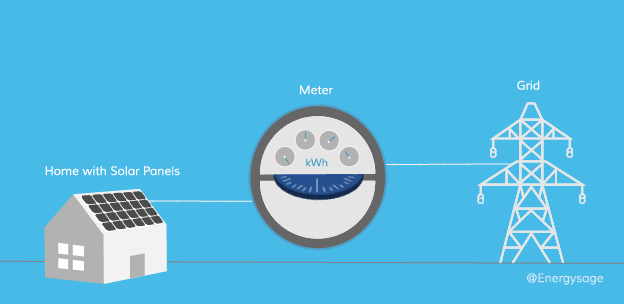Oregon Net Metering: 2025 Homeowner's Guide
Thinking about going solar in Oregon? Understanding how net metering works can help you make the most of your system and save more on your electricity bills. This 2025 guide breaks down the key details for homeowners, from how credits are calculated to which utility companies participate.
What is Net Metering?
Net metering is a billing arrangement that allows homeowners with solar energy systems to receive credit for the excess electricity they generate. When your solar panels produce more energy than your home uses, the surplus is sent back to the utility grid. In return, your utility company credits your account, helping you offset the cost of the electricity you pull from the grid when your system isn't producing enough, such as at night or during cloudy weather.
In Oregon, net metering is available through several major utility companies, including Portland General Electric (PGE), Pacific Power, and a variety of local electric cooperatives and municipal utilities. Each provider must comply with Oregon Public Utility Commission (PUC) rules regarding net metering, but credit structures and program specifics can vary slightly by utility.
2025 Oregon Net Metering Rates
As of 2025, Oregon’s net metering policy still credits customers at the full retail rate for each kilowatt-hour (kWh) of solar energy they send back to the grid. For example, Eugene Water & Electric Board (EWEB) offers a net metering rate of $0.0710 per kWh. This means the value of the electricity you generate is the same as what you’d otherwise pay to consume that electricity from your utility provider. It’s a dollar-for-dollar exchange that significantly boosts the financial return on your solar investment.
How Net Metering Works in Oregon
Here's a breakdown of how net metering functions when you install a solar panel system in Oregon:
Solar Panel Installation: You begin by installing a solar panel system on your roof or elsewhere on your property. This system connects to your home’s electrical system and to the utility grid.
Electricity Generation: Your panels generate electricity using sunlight. That electricity is used to power your home’s appliances, lights, and devices. This reduces the amount of electricity you need to purchase from your utility company.
Excess Energy: During sunny summer months, your solar system may produce more electricity than your home can use. Instead of going to waste, that excess power is automatically fed back into the utility grid.
Net Metering: A special bidirectional meter tracks the flow of electricity in both directions—from the grid to your home and from your home to the grid. When your system exports electricity, those kilowatt-hours are recorded and added to your metering credits.
Credit on Bill: Each billing period, your electric utility company applies credits for the electricity you sent back to the power grid. These credits offset the cost of the electricity you consumed from the grid when your solar panels weren’t producing.
Unused Credits: If you produce more electricity than you consume in a given month, your unused credits roll over for up to 12 months. If any credits remain at the end of the annual billing cycle, they’re donated to low-income bill assistance programs under Oregon's net metering rules.
Who is Eligible for Net Metering in Oregon?
Net metering is available to most residential and small commercial utility customers who install qualifying renewable energy systems, including solar photovoltaic (PV), wind, hydroelectric, and certain biomass systems. To qualify:
Your system must be under 25 kilowatts (kW) for residential properties.
You must be connected to a utility that offers net metering.
Your system must be primarily designed to meet on-site energy consumption needs.
Before installing a system, it’s important to check with your local utility for specific program requirements and to complete any necessary interconnection agreements.Financial Benefits for Homeowners
Financial Benefits of Net Metering for Oregon Homeowners
The most immediate financial benefit of net metering is reduced monthly electric bills. By generating your own electricity and earning credits for surplus production, you can significantly cut down on your energy expenses.
Net metering also improves the long-term ROI of your solar system. It shortens the payback period often to 6–10 years, depending on system size, usage, and incentives. Over the life of your system (typically 25–30 years), these savings can add up to tens of thousands of dollars.
And because net metering credits are based on the retail rate of electricity, they shield you from rising utility costs over time. Even if energy prices go up, your credits retain their full value, helping you lock in long-term savings.
Get Started With Net Metering Today
If you’re considering solar for your Oregon home, now is the perfect time to take advantage of net metering. With strong credit values, statewide policy support, and additional incentives like the Energy Trust of Oregon rebates and federal tax credits, your solar investment can start paying off faster than ever.
Earthlight Technologies is a professional solar company that makes going solar easy for Oregon homeowners Our team handles everything from system design and permitting to utility paperwork and installation. We'll walk you through your net metering options, explain your potential savings, and help you determine the best system size for your property.
Ready to generate your own clean energy and get credit for it? Contact Earthlight Technologies today for a free solar evaluation and learn how net metering can work for you.

